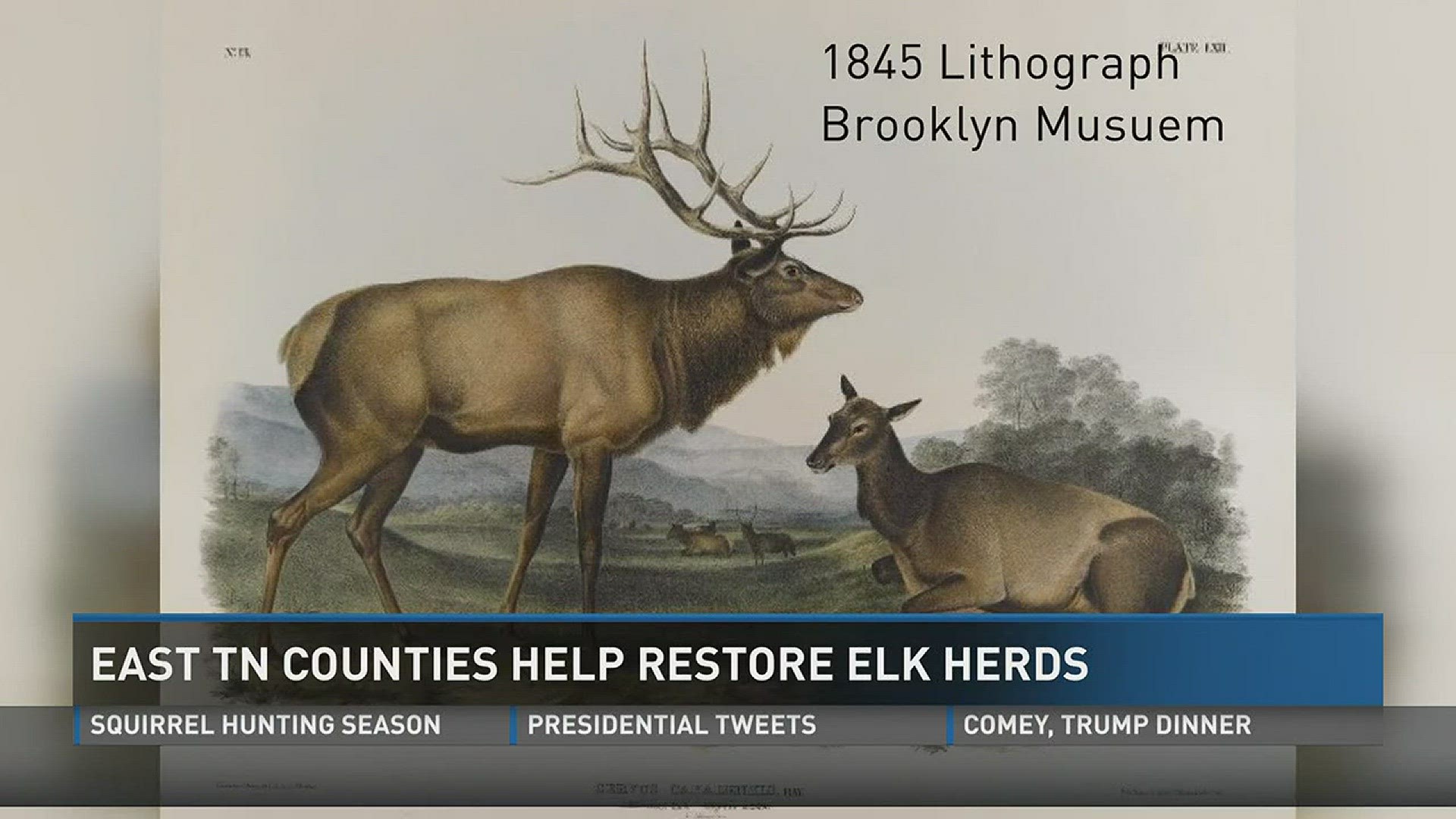The Tennessee Wildlife Resources Agency is seeking public input as it updates its strategic elk management plan.
The last recorded elk native to Tennessee was killed in Obion County in 1865, but in 2001 TWRA began reintroducing a closely related subspecies. TWRA released 201 elk over eight years, and the population has since grown to around 400 animals.
"They're a missing part of our ecosystem and it's really interesting to see how they fit in," TWRA elk program leader Brad Miller said.
Miller says public input is an important part of further developing the elk management plan. TWRA is holding two workshops where the public can give feedback and learn more about elk in Tennessee.
The first workshop will be Tuesday May 16 at 6 pm at the Ball Farm Event Center located at 2107 General Carl W. Stiner Hwy in LaFollette.
The second workshop will be held Thursday, May 18, at 6 pm at Fairview Elementary School in the Straight Fork Community of Scott County located at 8702 Baker Hwy in Huntsville.
Those unable to attend the workshops can give feedback by emailing Ask.TWRA@tn,gov or mailing comments to 3030 Wildlife Way, Morristown, TN 37814. TWRA asks that notes have "Elk Program Comments" in the subject line.
TWRA's elk restoration program covers parts of Anderson, Campbell, Claiborne, Morgan and Scott counties and is just one piece of a larger effort to restore elk populations across the eastern United States.
"We're uniquely poised to see that our five county restoration area zone that has elk within it actually butts up against the Kentucky reintroduction project, so we actually have seen some animals from Kentucky come into Tennessee and vice versa," Miller said.
Kentucky's elk restoration program now has more than 10,000 animals compared to Tennessee's 400. Miller attributes that to the landscape. Elk prefer to live near large grassy areas, and reclaimed mountain top removal mining has created more habitat for elk north of the state line.
"We're somewhat constrained in our open lands East Tennessee," Miller said.
The Hatfield Knob Viewing Area boasts open grassy fields, but creating that habitat took work by multiple agencies.
"When the elk were reintroduced we were working with the University of Tennessee to do extensive radio telemetry - where we follow animals around. They found that animals were using this flat top, but at the time it was wooded," Miller said.
The TWRA, Campbell Outdoor Recreation Association, the Tennessee Wildlife Federation and other organizations and groups removed trees and built an observation tower so the public could have a better chance to view the elk.
A University of Tennessee survey found that the Hatfield Knob viewing tower is visited around 14,000 times annually.
Hunting elk in Tennessee is very limited.
Beginning in 2009, a lottery system grants five archery permits, five modern gun permits and a junior hunt.
In 2016, two elk were legally harvested. A third elk was harvested by a hunter with a permit, but the hunter was charged with hunting big game outside of the designated hunting zone.

